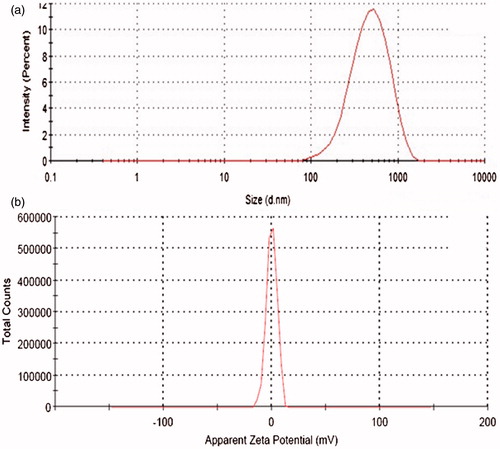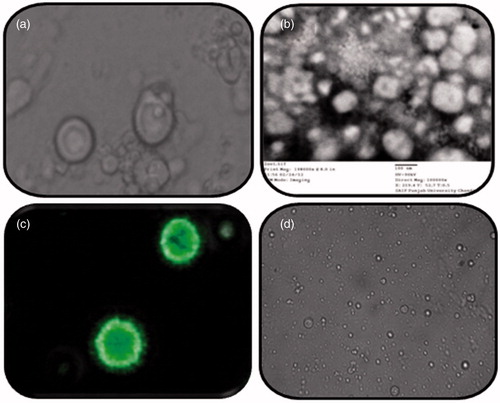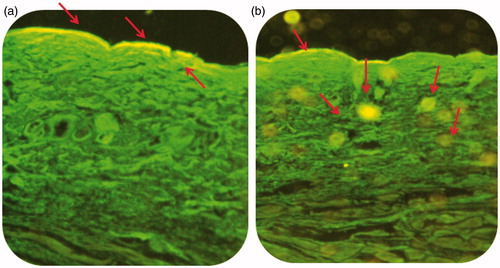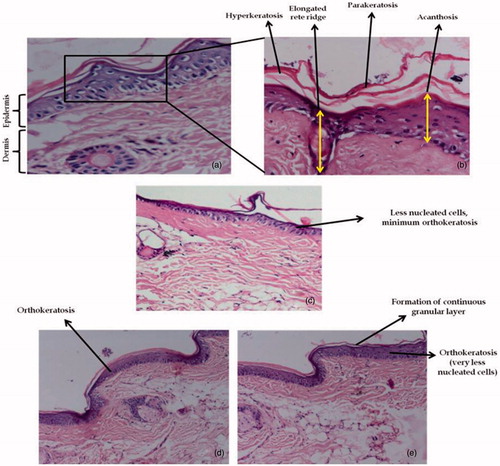Figures & data
Figure 1. (a) Particle size distribution curve of the selected liposomal dispersion and (b) zeta potential measurement observed during analysis.

Table 1. Composition and different parameters of liposome formulation.
Figure 2. (a) Optical microscopy image of selected liposome formulation at 100×, (b) TEM photomicrograph of (a) at 200 000×, (c) CLSM image of 6-coumarin-loaded liposomes at respective wavelength, and (d) Optical microscopy image of liposomal hydrogel.

Figure 3. Rheological profile of (a) selected FA liposome gel, (b) FA commercial cream, and (c) FA hydrogel and texture analysis of (d) selected FA liposome gel, (e) FA commercial cream, and (f) FA hydrogel.

Figure 4. In vitro release profile of fusidic acid from different formulations through mice abdominal skin (n = 3) in 24 h time period.

Figure 5. Confocal laser scanning photomicrographs of fixed skin sections after treatment with (a) 6-coumarin-loaded hydrogel and (b) 6-coumarin-loaded liposomal gel.



